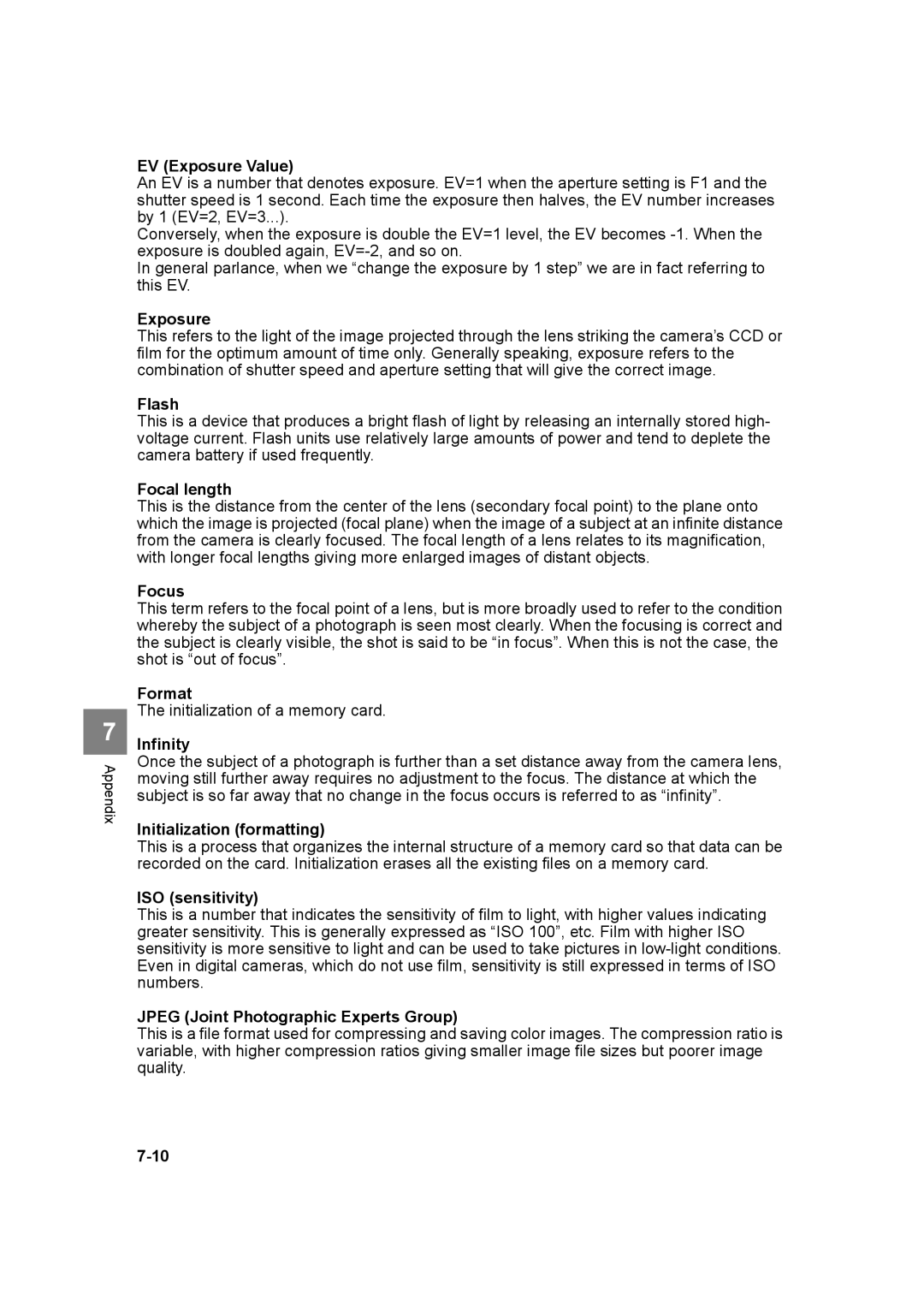7
Appendix
EV (Exposure Value)
An EV is a number that denotes exposure. EV=1 when the aperture setting is F1 and the shutter speed is 1 second. Each time the exposure then halves, the EV number increases by 1 (EV=2, EV=3...).
Conversely, when the exposure is double the EV=1 level, the EV becomes
In general parlance, when we “change the exposure by 1 step” we are in fact referring to this EV.
Exposure
This refers to the light of the image projected through the lens striking the camera’s CCD or film for the optimum amount of time only. Generally speaking, exposure refers to the combination of shutter speed and aperture setting that will give the correct image.
Flash
This is a device that produces a bright flash of light by releasing an internally stored high- voltage current. Flash units use relatively large amounts of power and tend to deplete the camera battery if used frequently.
Focal length
This is the distance from the center of the lens (secondary focal point) to the plane onto which the image is projected (focal plane) when the image of a subject at an infinite distance from the camera is clearly focused. The focal length of a lens relates to its magnification, with longer focal lengths giving more enlarged images of distant objects.
Focus
This term refers to the focal point of a lens, but is more broadly used to refer to the condition whereby the subject of a photograph is seen most clearly. When the focusing is correct and the subject is clearly visible, the shot is said to be “in focus”. When this is not the case, the shot is “out of focus”.
Format
The initialization of a memory card.
Infinity
Once the subject of a photograph is further than a set distance away from the camera lens, moving still further away requires no adjustment to the focus. The distance at which the subject is so far away that no change in the focus occurs is referred to as “infinity”.
Initialization (formatting)
This is a process that organizes the internal structure of a memory card so that data can be recorded on the card. Initialization erases all the existing files on a memory card.
ISO (sensitivity)
This is a number that indicates the sensitivity of film to light, with higher values indicating greater sensitivity. This is generally expressed as “ISO 100”, etc. Film with higher ISO sensitivity is more sensitive to light and can be used to take pictures in
JPEG (Joint Photographic Experts Group)
This is a file format used for compressing and saving color images. The compression ratio is variable, with higher compression ratios giving smaller image file sizes but poorer image quality.
